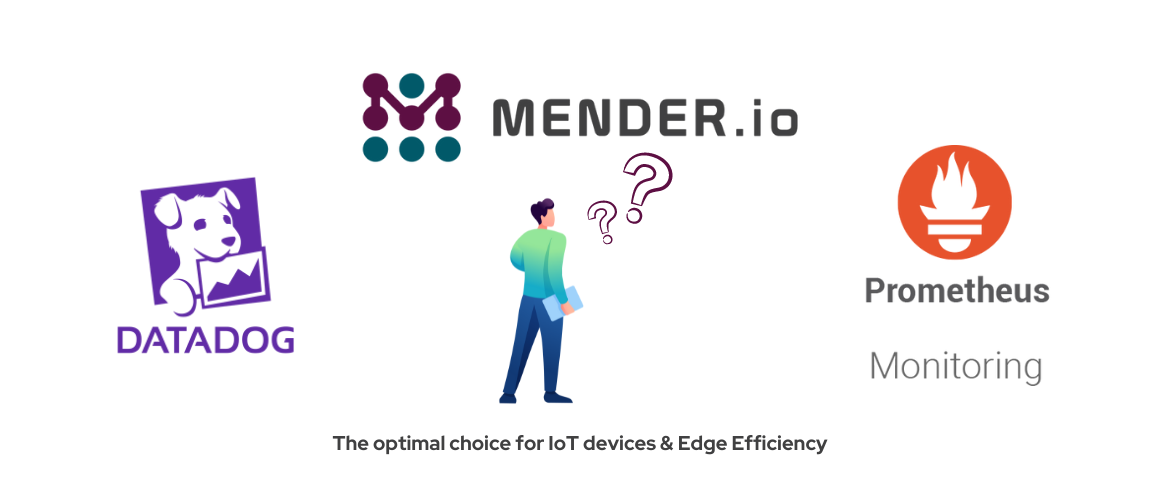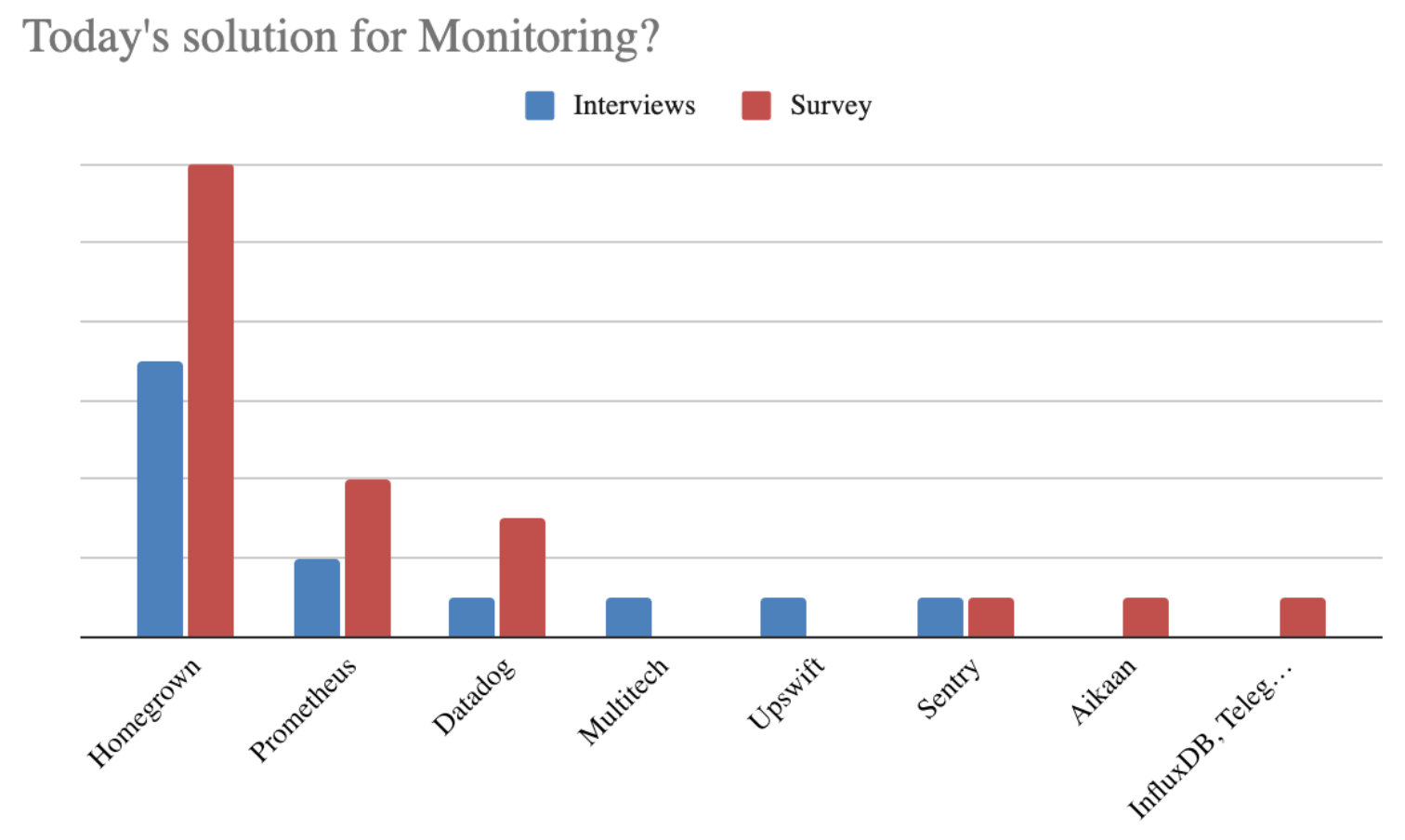
A best of breed remote monitoring IoT solution will “ensure all devices and services are healthy.” It will do this by notifying/alerting users about downtime, or performance issues of key services and metrics that may cause their IoT product to have downtime and cause customer problems.
A best of breed remote monitoring IoT solution should also help you to have:
- Less performance issues / degradation of service(s)
- Improved customer satisfaction rate
- Improved performance through predictive analytics (using monitor data)
- Reduced operational costs
Remote monitoring IoT itself is not a new use case, in fact, products addressing it have existed for 20 years. So, why not just use one of these legacy “cloud and server world” products for connected devices as well? The problem is that they have been designed for a different environment: cloud and server infrastructure. The typical architecture is very heavy on server-processing with the client continuously sending metrics and data to the server.
The obvious problem with this type of architecture for connected field deployed devices is the bandwidth usage. For connected devices, bandwidth is limited and often expensive, especially if traffic occurs over cellular or satellite networks. Further, it is often not possible to connect to devices from the server as they move between networks, or are only intermittently online. Always-on and available clients can be assumed in typical IT infrastructure monitoring solutions, but this is not the reality in the world of connected devices.
A server-heavy architecture means that responding to issues have longer cycle times. What should take milliseconds to fix may require many round trips to different cloud services, and even humans being involved, before the issue is resolved.
Homegrown remote monitoring IoT has serious flaws
Building a remote monitoring IoT system from the ground up is not the most sensible approach for organisations even with large teams of developers at their disposal. Specialist expertise is required to address and deliver against the various nuances and complexities of IoT device monitoring and ensure that it is integrated with other key aspects of the device management such as OTA software updating. Often with homegrown remote monitoring IoT, users make do with a minimum functional build and are reluctant to embrace a best of breed design and feature set. They are also often unable to perform proactive intervention before problems occur as complacency sets in and they rely on the limited features set in the homegrown build. Also, mostly in homegrown, only an after the fact review is possible with no capacity for alerting.
A Mender.io end user survey indicates that homegrown development of remote monitoring IoT has been the main direction of travel for organizations up to this point. But this will change as the Total Cost of Ownership, speed of development, relative fragility and security risks, are properly compared to best of breed managed services on the market.

Cons of server and cloud orientated monitoring solutions for IoT monitoring
The server and cloud orientated monitoring solutions that have been ported to cater for IoT through a single pane of glass view (SPOG) may have some significant drawbacks when compared to a dedicated remote monitoring IoT solution. They may be expensive based on a combination of cost, and bandwidth and hardware resources, not tailored for IoT devices specifically; and not able to produce alerts from the IoT device.
They can provide impressive bandwidth usage statistics, claiming 316 bps (bits per second with monthly data transfer of 129 megabytes / month per device over cellular. This is adequate if default metrics are enough, but this does not include custom metrics or more advanced monitoring routines such as Logs, Tracing for APM, Live process monitoring, or Network performance monitoring which may become absolute requirements in the IoT monitoring project. How then can the bandwidth cost be controlled and managed with a cloud server and host architecture? The answer could turn out to be “not very well!”
Designed in the cloud/server world and ported to IoT
Examples of the server and cloud orientated monitoring solutions which now cater for remote monitoring IoT include:
Datadog IoT Agent
The Datadog IoT Agent is a version of the Agent synonymous with the cloud server world. This IoT Agent is typically used to monitor a wide variety of devices from digital displays to security devices running image detection algorithms.
This IoT agent allows you to view single device performance with customisable graphing and to get alerts on current uptime and potential future uptime of the IoT device. It also offers application performance monitoring and log analysis including security logs.
This IoT Agent does not include the Python interpreter and other integrations pre-packaged with the standard Agent. It also doesn’t support tracing for APM, live process monitoring, or network performance monitoring.
The Datadog IoT Agent does however include the following checks for:
- System (CPU, IO, load, memory, swap, and uptime)
- Disk
- Network
- Systemd
- NTP
Prometheus
Prometheus is an open source software that can be used for IoT monitoring. It is regarded as feature-rich for cloud services and servers but it is perhaps less suitable for IoT due to its requirement for a strong, inbound connection and authentication.
Like Datadog, it offers the ability to view a single device performance with customisable graphing. And like Datadog, It also provides alerts on current uptime and potential future uptime with advanced management including an alert manager for monitoring things such as de-duplication and service silence. There is also application performance monitoring with client libraries for 20 languages, and 4 supported.
Crucially, with Prometheus, there is a requirement to build your own IoT agent from scratch.
Mender designed and optimised just for remote monitoring IoT
There are new options on the market that are innovating and using edge processing to optimise the efficiency and cost involved in monitoring IoT devices. Efficient operation in saving data transfer costs over bandwidth in IoT scales at scale is a crucial strategic decision. Mender Monitor is the leading example of this dedicated focus on efficient remote monitoring IoT at scale.
Mender Monitor
Mender Monitor add-on package to Mender OTA software updates, detects and analyzes health issues of devices, services and applications. Mender Monitor is unique in that it uses edge processing and is optimised for use with IoT devices - suited for intermittent connectivity and uses close to zero bandwidth. There is no shifting and transfer of data backwards and forwards from cloud server to IoT device. Traditional IoT monitoring tools have been designed in a different environment consisting of cloud and server infrastructure which can be very heavy on server-processing with the client continuously sending metrics and data to the server. This uses a lot of bandwidth when communicating with connected devices. Furthermore, the bandwidth may be limited or expensive if running over cellular or satellite networks as is the case with many IoT environments. Also, it might not be possible to connect to devices from the server due to movement from one network to another, or the devices only being online intermittently. So you can see an edge solution for IoT monitoring makes much more sense and also reduces the time it takes to respond to issues as there is no need to make round trips to different cloud services, in order to address them. With Mender Monitor, the Alert logic and configuration has been moved from the server to the edge device. Instead of sending all the metrics from all the devices all the time, the devices will only send Alerts that have been triggered. Monitoring of applications and services running under systemd is supported out of the box. Mender Monitor allows you to alert on log patterns that appear in output or log files using edge processing, i.e. on the device itself. Log monitoring is also supported. All triggered Alerts will by default also create an email notification, so you become aware and can handle any detected issues right away. In a typical alerting scenario monitoring a single service, Mender Monitor generates a total of 230 kbytes of network traffic over a period of 17 minutes. This includes all the data, including all the headers from TCP/IP stack encapsulation, and incoming and outgoing packets.
Try out Mender Monitor for your fleet of IoT devices
If you want to perform secure and robust remote monitoring of your IoT devices from POC to scale, try out the Mender Monitor. It is an add-on to the Mender Enterprise OTA software updates solution and is available in a trial for up to 10 devices. Mender Monitor is the most modern way to perform IoT device monitoring with its use of edge processing limiting bandwidth usage and facilitating intermittent device connectivity.
The best place to do a quick test of the new release from scratch. Sign up for a new Free trial and all features and add-ons are available for 12 months for free.
Follow this tutorial to get started with Mender Monitor.
Get an in-depth overview of Mender Monitor.
Recent articles
The struggle to reach global markets for medical device manufacturers: The importance of international compliance
The differences between the US FDA’s device approval process and the EU’s medical device regulation (MDR): An essential dual-compliance framework for global manufacturers
Why OTA updates are now mission critical for future-proofed device lifecycle management
Learn why leading companies choose Mender
Discover how Mender empowers both you and your customers with secure and reliable over-the-air updates for IoT devices. Focus on your product, and benefit from specialized OTA expertise and best practices.




